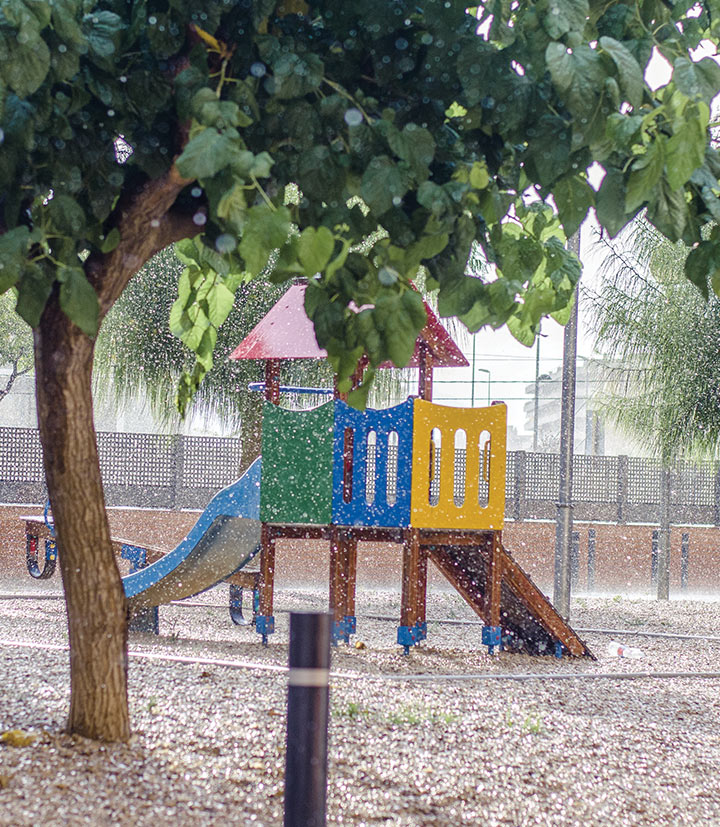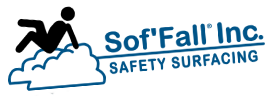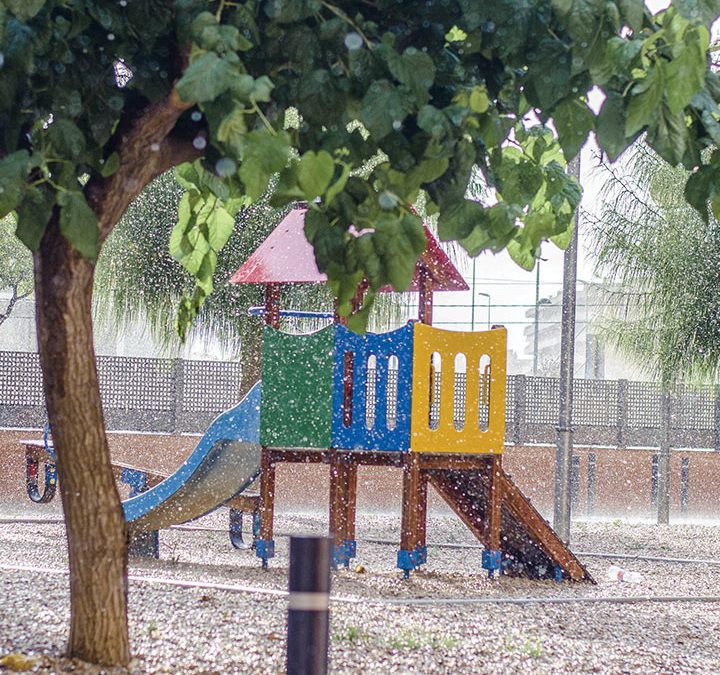There are lots of playground surfacing materials found in play areas, and every one of them reacts differently depending on the weather. Most materials become unsafe when rained on, and that’s why you should always avoid letting your children play in bad weather. Here is a quick overview of how rainfall affects the five most common playground surfacing materials.
SAnd
Play sand is a soft playground surfacing used in most parks, but it absorbs almost no impact when wet. Course sands become compacted after rain, and that makes it much more dangerous when falling. If your child jumps off of playground equipment on damp sand, then they will feel a majority of the blunt force. This is a big problem for playground safety because it greatly increases the risk of injuries. Sand is not an adequate absorber of force to truly protect our children when they fall on a sand playground.

Minimizing the amount of force that a child’s body takes on as they fall is the best way to improve playground safety.
Wood Chips
Wood chips are mostly used in dry climates because of its tendency to hold onto moisture. It has the same problem that sand has when it gets wet. The chips become heavier after a rain, and they are less efficient at spreading out impacts from falls. Wood chips can stay damp for days after a heavy rain, and you should check to see if the chips are wet underneath the top layer before letting your children play.
An important thing to note here is that we are referring to actual wooden chips. Not Sof’Fall’s Engineered Wood Fibers.
“The bigger concern is not educating the child on playing safer but teaching the people who build the parks what safety is supposed to look like.”
Cement
Understanding playground safety is very important when the play area uses hard surfacing materials like cement. Falling from standing-height can cause severe injuries on cement. Smooth concrete can become slippery after rain, so you should avoid running on it. Cement can also freeze very quickly in cold temperatures. Be sure to check for leaves, and look out for any other debris that could become a slip hazard while running.
Asphalt
Asphalt usually has more grip than other hard surfacing materials, but that doesn’t make it slip-proof. This material is mostly used in skate-parks and running tracks. Wet debris in an area after rain is the real hazard. Always wear a helmet when riding a bike, and look ahead to avoid any slippery obstacles. Even running shoes can easily slide if you step on wet grass clippings, so remember to keep your eyes open when enjoying recreation in rainy weather
Rubber
Loose rubber found in play-areas is almost unaffected by the rain as far as impacts go. It will not absorb extra water, and it stays relatively the same. Rubber padding for running tracks is another story. You should never run on rubber-padded walkways when they are wet from rain unless you know for sure that they are slip-resistant. You can easily lose your footing on rubber padding, and you’ll probably get hurt. If you get caught in a storm while jogging, then you should move off of the track into the grass. Always use your best judgment when determining playground safety hazards.
You’re Safer on Soft Playground Surfacing
Everyone wants to have a blast on the playground, and everyone can have a safe experience while enjoying their day. Use the helpful information you’ve read to ensure the safety of your family when you head out for fun
We've been catching children when they fall for over 27 Years
Get in touch with us to learn why our play area surface products are your best option.Get your free quote today.
CONTACT US!
Call, email or send us a message from our online form. We're happy to answer your questions or send you an estimate.

